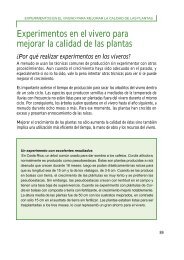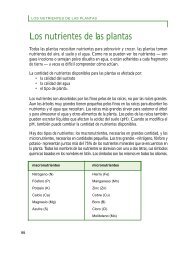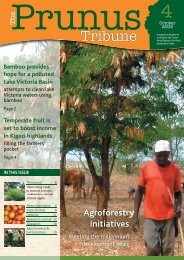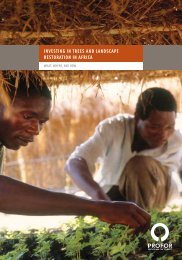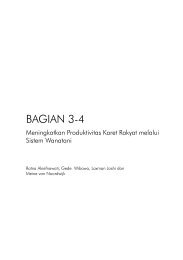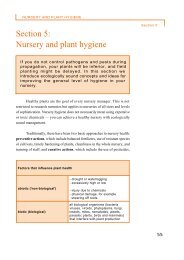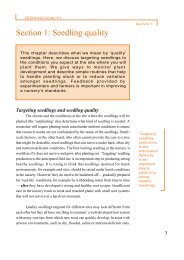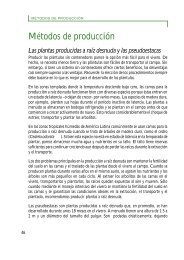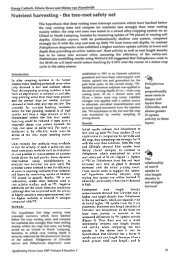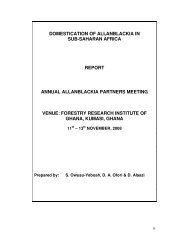1 Adoption, Profitability, Impacts and Scaling-Up of Agroforestry ...
1 Adoption, Profitability, Impacts and Scaling-Up of Agroforestry ...
1 Adoption, Profitability, Impacts and Scaling-Up of Agroforestry ...
Create successful ePaper yourself
Turn your PDF publications into a flip-book with our unique Google optimized e-Paper software.
6in the range <strong>of</strong> 70-100 kg/ha is generally accumulated <strong>and</strong> can be applied as greenmanure, resulting. Field trials show that maize yields obtained from such fertilizer treesystems consistently reaches two or more times the yields from farmers’ practice <strong>of</strong>continuous maize production without application <strong>of</strong> external mineral fertilizer inputs.Further details <strong>of</strong> fertilizer tree systems are described elsewhere (Mafongoya et al., 2003;Phiri et al ., 2003)2.2 Biomass transferFarmers have been growing vegetables widely during the dry season in wetl<strong>and</strong>s (knownlocally as dambos) but declining soil fertility has posed a major challenge. Biomasstransfer refers to cutting <strong>and</strong> carrying (“transferring”) nutrient-rich leaves <strong>of</strong> agr<strong>of</strong>orestryspecies (usually planted in the upl<strong>and</strong>) to fertilize fields for the production <strong>of</strong> high valuevegetable crops <strong>and</strong> an extra maize crop in the dambos during the dry season. Biomasstransfer <strong>of</strong>fers smallholder farmers the opportunity to supplement their incomes bygrowing cash crops that fetch high prices in urban markets. In this system, nitrogenfixing trees or shrubs are planted on a separate plot <strong>and</strong> the leaves are regularly cut <strong>and</strong>used to fertilize neighbouring field plots in a cut-<strong>and</strong>-carry way, especially in the dambos.It simply involves transferring <strong>of</strong> leaves <strong>and</strong> twigs <strong>of</strong> fertilizer trees from one part <strong>of</strong> thefarm to another. Farmers harvest trees planted at the upl<strong>and</strong> to fertilize vegetablescultivated in the dambos during the dry-season <strong>and</strong> use the coppices to fertilize theirmaize during the main season, thereby having two full crops in a year. In EasternZambia, Gliricidia sepium leaf mulches were used in combination with nitrogenfertilizers. In a given season, the responses to Gliricidia sepium leaf biomass wereconsistently higher than those <strong>of</strong> sole crop <strong>and</strong> mulch from other sources. It was





